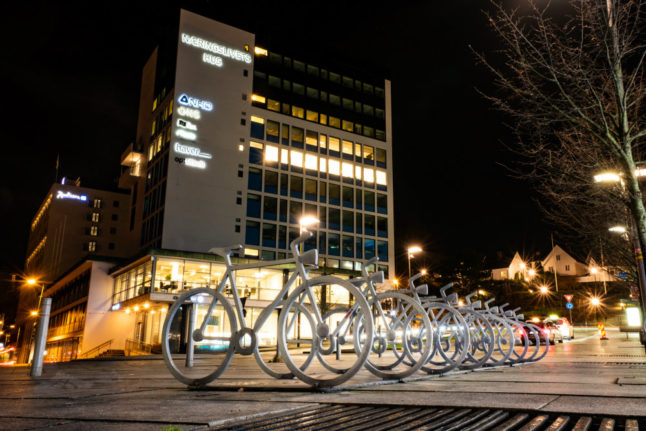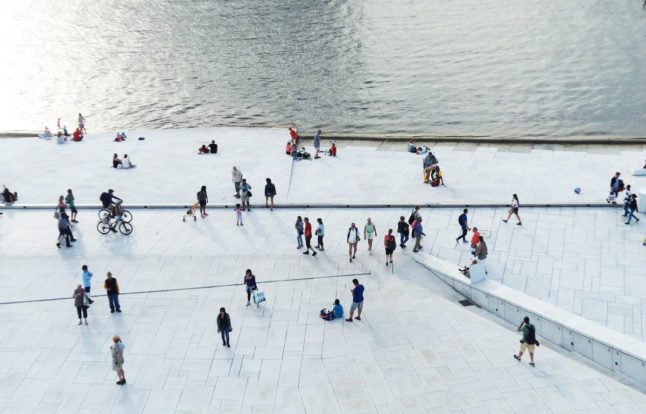On two wheels
In many of the major cities in Norway, the options for how to get around are abundant.
Cycling is growing in popularity in Norway, including battery-assisted cycling. According to Statistics Norway, electric bicycle imports increased 42 percent between 2017 and 2018.
City planners are taking notice of this surge in popularity and thinking ahead. Currently, nine different cities around Norway (Bergen, Stavanger, Bodø, Tromsø, Trondheim, Oslo, Moss, city areas Fredrikstad-Sarpsborg and Buskerudbyen) are conducting research on bike traffic to find out the best place for future bicycle lanes, according to NRK.
If you like the idea of cycling but are not ready to purchase one, check to see if your city or town has bicycle sharing programmes. In addition to it being low-cost and convenient, it’s also a great way to learn your way around a new city. You can buy a monthly subscription, season pass, or a one-time access.
By downloading the app, you can find a bike at a station close to you and check where to drop off bike when you are finished. There are over 280 parking and pick-up and drop-off stations around Oslo for the city's bysykkel, or city bike. For more information about pricing and how Oslo city bikes are operated, look here.
On four wheels
Nabobil is a private car rental platform that is available in many parts of Norway. It has been in business since 2015 and has over 200,000 completed leases and over 7,000 cars available for rent, according to news wire NTB.
If you are in need of a car for a short term period and have a valid driver’s license, then this could be a more convenient and low-priced option than going through a traditional car rental company. The cost differentiates between cars as it is up to the car’s owner to set a price (which also includes insurance and roadside assistance). Look here for further details.
If it is necessary for you to own a car, you can save a lot of money by choosing an electric vehicle.
Unlike diesel or gasoline cars, which are heavily taxed, electric cars benefit from a very generous tax system, making their purchase prices relatively competitive.
There is also a huge discount on tolls if you are driving an electric vehicle, and cheaper parking (depending on where you are). You can also only be charged a maximum of half the price paid by diesel vehicles when on a ferry.
READ ALSO: Electric car sales in Norway motor to new high
Public transportation
The public transportation in Norway's cities is known for being both reliable and affordable. Like cycling, this method of transport has also increased in popularity. According to Statistics Norway, there has been a 35.5 percent increase in public transportation use from 2009 to 2019.
The government wants to continue to see an increase of use in public transportation and, in the National Transport Plan for 2018-2029, specifically seeks to increase public passenger transport in big cities. The government says it will do this by making an effort to make collective transport accessible for all, increase its effectiveness, and to make it the best transport option. This includes the price, comfort, and travel time.
Discounts on public transportation are offered to many groups including seniors, youth, and students. Look here for a list of ticket pricing with Ruter, the the public transport authority for the Oslo and Akershus counties.
Helpful facts and vocabulary
- elsparkesykkel – electric scooter
- sykkelsti – bike path
- billett – ticket
If you are looking to buy a bicycle for a low price check on online marketplace Finn.no. Used bikes can be found on Finn throughout the year.
Depending on where you are originally from, the option of taking a taxi may once have been a low-cost option. This is not the case in Norway! Taxis are notoriously more (way more) expensive than public transportation. Especially during the hours with surge pricing and on public holidays like May 17th, Norway's national day.
Uber recently returned to Norway after a three-year absence, due to a change in the law which allows the company to operate again.



 Please whitelist us to continue reading.
Please whitelist us to continue reading.
Member comments